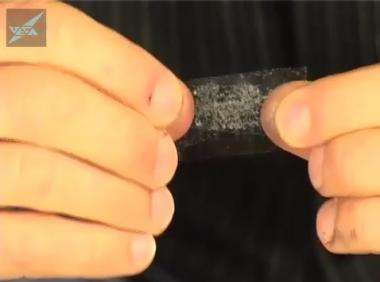December 7, 2010 weblog
How to make graphene with a pencil and sticky tape (w/ Videos)

(PhysOrg.com) -- In a video that communicates science achievements to people of all backgrounds, physicist and TV presenter Jonathan Hare explains how to make graphene from a graphite pencil and a piece of Scotch tape. The simple experiment shows how, in addition to being Nobel Prize-worthy material, graphene is also easily accessible for anyone with a scientific curiosity.
The video was developed as an initiative of COST (European Collaboration for Science and Technology), an intergovernmental association promoting joint science research, with aid from The Vega Science Trust, a science video communication charity.
This past October, the 2010 Nobel Prize for Physics was awarded to Andre Geim and Konstantin Novoselov from Manchester University for their work on graphene.
The video on how to make graphene at home is one of two videos (both shown below) explaining the amazing properties of the material. Hare has previously appeared on the BBC program “Rough Science” and now runs the Creative Science Centre in Sussex.
More information: via: IEEE Spectrum
© 2010 PhysOrg.com
















